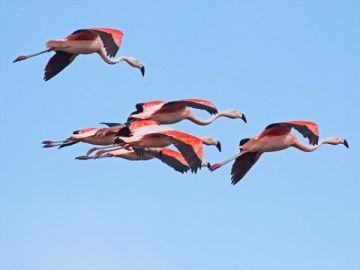
Birds of Patagonia: A Brief Birdwatcher’s Guide
When most people think of Patagonia, the first things that come to mind are stunning scenic vistas, dramatic mountain landscapes and mammals such as foxes, guanacos and pumas.
But the birds of Patagonia are equally impressive, surprisingly abundant and relatively easy to spot amongst the region’s open plains and sparse foliage.
Here are 10 of our favorite avian species you’re likely to see on a Patagonia tour:
Andean Condor
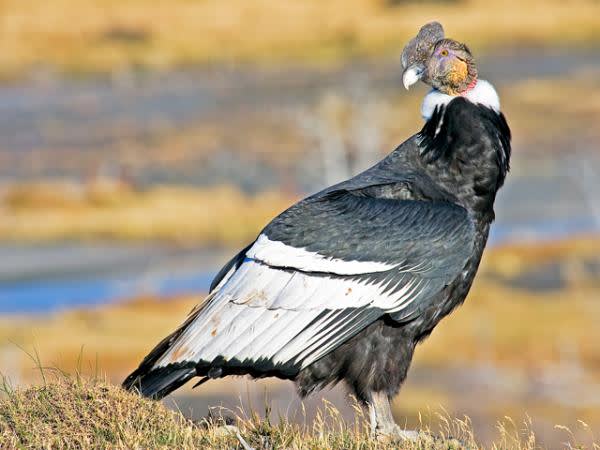
With a maximum wingspan of over 10 feet, this New World vulture strikes an imposing silhouette as it soars above the plain in search of carrion on which to scavenge. With a lifespan of around 70 years, the Andean condor is black with a white ruff at the base of the neck and, in males, large white patches on the wings and a dark red comb on the crown of the head.
Austral Parakeet
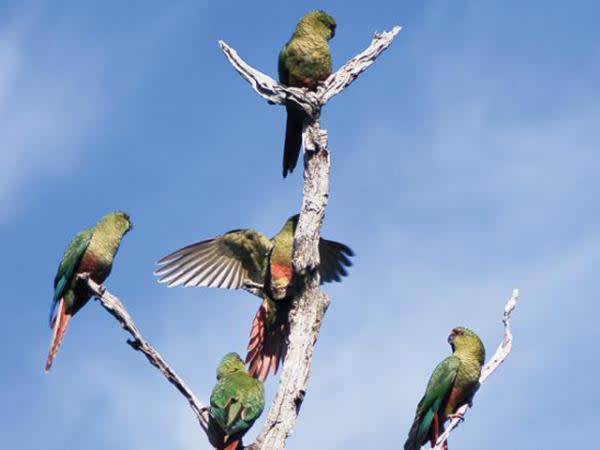
Also known as the Austral conure or emerald parakeet, this colorful bird can be found in woods and scrubland ranging from the southern tip of South America north to Temuco, making it the world’s southernmost parrot species. Measuring nearly 14 inches tall and found in flocks of 10-15 birds, the Austral parakeet is green and lightly barred, with red markings on the forehead, belly and tail.
Chilean Flamingo

Closely related to the American flamingo and greater flamingo, this endemic species is large (measuring 43-51 inches), has grey legs with pink joints, a bill that’s more than 50% black, and pinker plumage than the greater flamingo (but less pink than flamingos found in the Caribbean. They prefer large flocks and crowded conditions for breeding, laying one egg in a pillar-shaped mud nest on the ground.
Hooded Grebe
Found in isolated lakes in the southern part of South America, this medium-sized (around 13 inches long) grebe is one of the most critically endangered birds of Patagonia due to climate change, the introduction of trout and salmon, and predation by kelp gulls. These beauties are easy to identify, with a white and dark grey back extending up to a black head with contrasting white forehead, bright red eyes and a reddish-brown peaked fore-crown.
Darwin’s Rhea
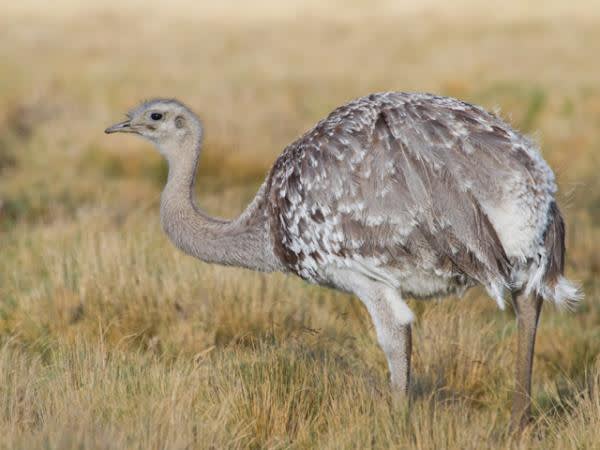
Also known as the lesser rhea, this large (35-39 inches tall, weighing up to 63 pounds) flightless bird is a frequent (and unusual) sight along the roads to/through Torres del Paine National Park . Like their cousins, the ostrich and emu, they have small heads and bills and long necks and legs, with spotted brown and white feathers and large wings that help them run at speeds up to 37 miles per hour!
Long-tailed Meadowlark
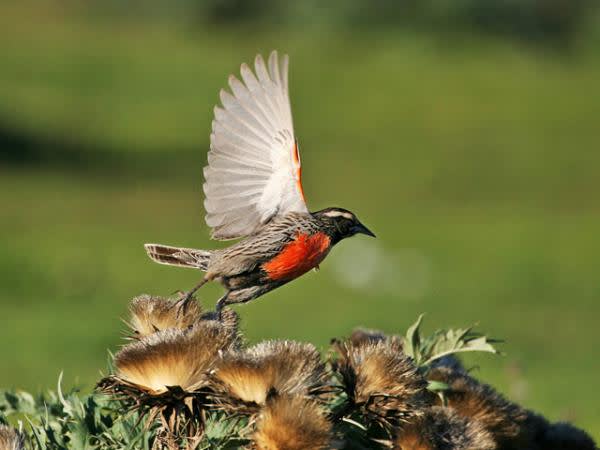
Native to southern South America and the Falkland Islands, the long-tailed meadowlark is easily mistaken for its much more endangered cousin, the pampas meadowlark. Measuring 10-11 inches, with long tails and pointed bills, the males are strikingly colorful – dark brown with black streaks, bright red breast and throat, and white and red markings around the eyes and head. They’re commonly spotted in the open grassland, where they nest and forage for invertebrates.
Lesser Horned Owl
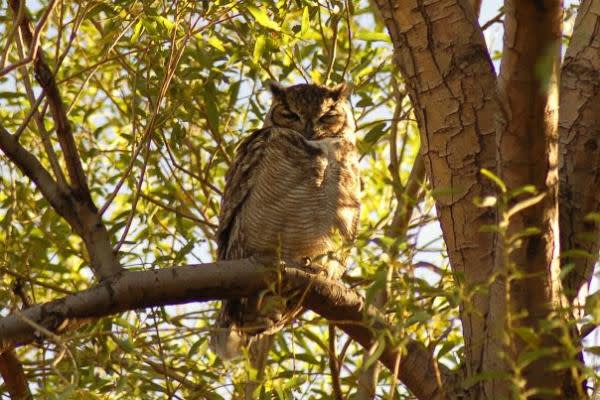
Also known as the Magellanic horned owl, this relative of the great horned owl measures around 18 inches long, with broad wings and plumage in varying shades of grey and brown. The large head includes a black border around the face, white stripes above the yellow eyes, and two ear tufts. Smaller than the great horned owl, the Patagonian species has a distinctively deep hooting call consisting of a double-note follow by a loud vibrating sound.
Magellanic Penguin
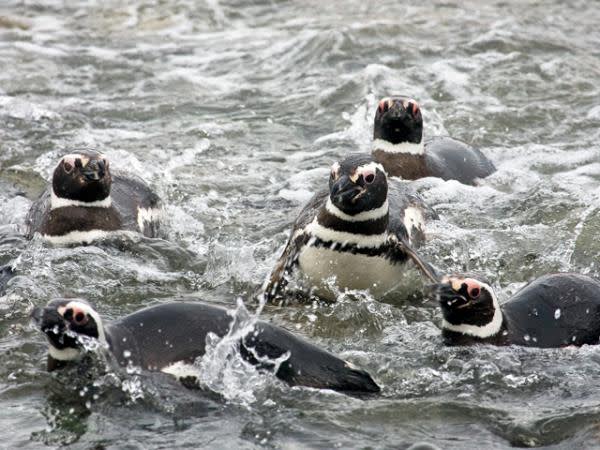
One of four penguin species found in Patagonia, Magellanic penguins are medium-sized (24-30 inches tall, weighing 6-14 pounds), with white abdomens, black backs, two black bands between their head and breast, and black heads with white bands that run from their eyes to their throat. Nesting under bushes and in burrows on sandy, rocky shores, these penguins have seen a steady population decline and are listed as Near Threatened by the IUCN.
Magellanic Woodpecker
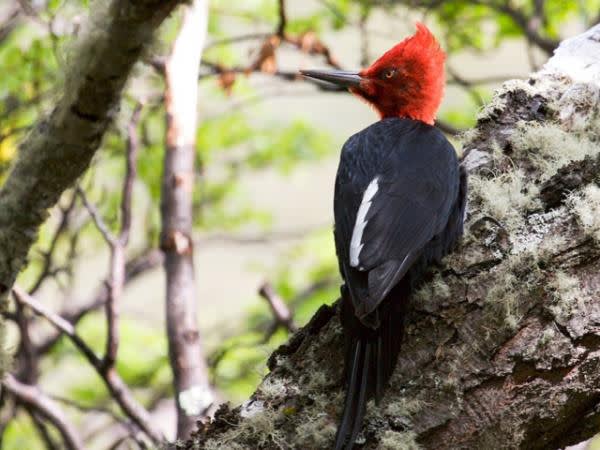
One of our favorite Patagonian sightings, these stunning birds are among the largest woodpecker species in the world, averaging 14-18 inches in length and weighing up to 13 ounces. Found in forests along the Andes in Chile and southwest Argentina, both the males and females have black bodies with white wing patches and grey bills. But the male has a vivid red head and crest, while the female has a black head with crimson at the base of the bill.
Southern Crested Caracara
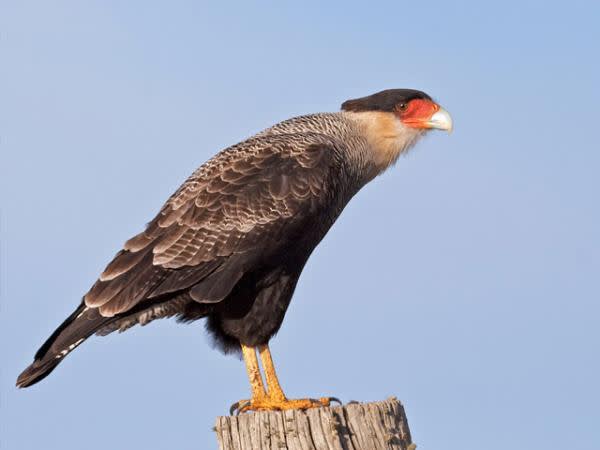
The second largest species of falcon in the world (average 20 to 26 inches long, 2 to 3.5 pounds, with a 47 to 52 inch wingspan), this brilliant bird of prey is fairly common in Torres del Paine National Park. They’re mostly dark brown, with yellow-orange legs and bill, white throat and nape, and white/brown-barred chest, mantle and tail. It’s distinguished from the similar Northern Caracara by the extensive barring on its chest, lightly mottled or barred shoulders, and dark barring on the pale lower back (which is black on the northern species).
Ready to see the birds Patagonia first hand? Exodus offers comprehensive Patagonia Tours, exploring both Chile and Argentina, as well as a Puma, Penguins & Whales tour and birding-intensive options.

